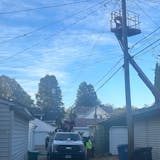They will confront ways of doing business in the Twin Cities that have led to some of the nation's worst racial disparities in income, housing and education, and they'll volunteer their time to do it.
And they'll be working with the Metropolitan Council, the regional planning agency embroiled in a federal fair housing complaint with two of the state's most racially diverse cities.
Despite those challenges, the Met Council's new Equity Advisory Committee has drawn more than 100 potential candidates ranging from neighborhood activists to college professors.
The committee is a priority of Met Council Chairman Adam Duininck, part of what he says is a greater effort underway to diversify the council's ranks and ensure its policies are drafted and implemented in an equitable fashion.
"It's come time to stop admiring the problem and make some significant changes," Duininck said.
The 21-member committee will set its own agenda and have broad latitude to analyze data and push for changes in regional planning, transportation and housing issues.
It also will have built-in diversity; it must include at least one black, Asian, Latino, American Indian and immigrant member, a person with disabilities, and a low-income resident.
It's hoped that the new committee will build on the Met Council's success in recruiting workers of color. But it arrives as the agency's policies come under fresh scrutiny.

